- What is physiotherapy? - (http://www.csp.org.uk/your-health/what-physiotherapy)
- Physical and Occupational Therapy for Arthritis - (http://www.webmd.com/osteoarthritis/guide/physical-occupational-therapy?page=2)
- Physiotherapy in Rheumatoid Arthritis - (http://www.ncbi.nlm.nih.gov/pmc/articles/pmc1395797/)
What is Physiotherapy for Arthritis?
What is Physiotherapy?
Physiotherapy or physical therapy, assists individuals affected by debilitating diseases, injury, or illness in regaining movement and functional use of their muscles, ligaments, and tendons. It is a scientific healthcare approach, which can be utilized for wide-ranging conditions from stroke to back pain to childbirth. It is personalized care for the patient based on the disease and lifestyle conditions. Physiotherapists provide therapeutic exercises, manual assistance, advice, and education to the patient. Through physiotherapy, patients are able to recover from painful conditions, resume normal work, and remain independent for a prolonged period. Physiotherapy is applicable to people of all ages.
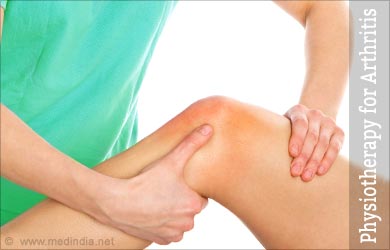
Physiotherapy for Rheumatoid Arthritis
Rheumatoid arthritis (RA) is a progressive and chronic debilitating disease. Patients afflicted by RA experience loss of functionality in limbs, increasing pain, and consequent deterioration of health. Lifespan is reduced in individuals with RA. To date, there is no cure for RA. Physiotherapy aims to provide temporary relief from pain, and retard the disability process of the individual.
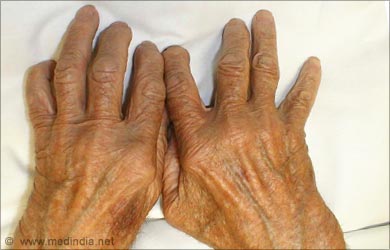
Physiotherapy for a patient with RA is determined by assessing the following aspects:
- Respiratory function
- Testing muscle strength
- Range of joint motion in limbs (ROM)
- Assessing posture
- Assessing functional capabilities (daily physical activities)
Following are the physiotherapy treatments used for patients with RA:
Electrostimulation
Electrical nerve stimulation has been found to provide therapeutic relief. Stimulation at high frequencies (~70 Hz) can provide relief from pain for nearly 18 hours. It has been observed that daily treatment for 15 mins, or once a week, results in relief from pain after 3 weeks. Postoperative pain, following knee-joint operations, can be treated with electrostimulation. Interfering current stimulation also provides relief from pain. Improved joint movement, reduction in swelling of muscles, and relief from pain are observed with electrostimulation.
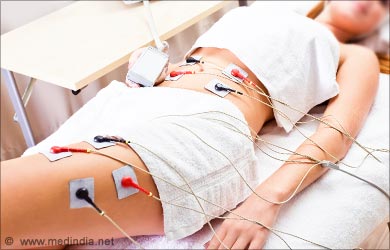
Balneotherapy / Hydrotherapy
The use of thermal or mineral water, in treating disease, is termed balneotherapy or hydrotherapy. The potential effects of balneotherapy are still debated. However, patients undergoing balneotherapy observe a marked reduction in joint pain at the time of treatment. Patients are able to perform exercises in a painless manner during the treatment regimen. There are multiple factors that improve the management of pain in individuals with chronic pain conditions. Water reduces 50% to 60% of body weight. The minerals in the water cause tendons, ligaments, and muscles to relax. The body releases acetylcholine (chemical in the nervous system), and endorphins (hormones). This creates a sedatory effect in patients and improves the action of painful joints, respectively. The surrounding environment also plays a significant role in creating a feeling of well being in the patient. The relaxing atmosphere, absence of work duties, a feeling of being on a vacation results in the patient feeling free of the incessant joint-pain.
The main objectives of balneotherapy are to enhance the quality of life of patients, strengthen muscles, improve joint movement, and provide relief from pain in joints. More research needs to be carried out to confirm the therapeutic effects of balneotherapy in the management of arthritis.
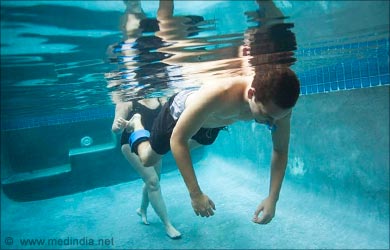
Cold / Hot Treatment
Hot treatment is normally provided to patients with chronic inflamed conditions. Temporary relief from pain, improved flexibility of joints, and relief from spasms in muscles are some of the benefits of heat treatment. Heat treatment can be provided by infrared radiation, hot-pack, hydrotherapy, paraffin, and fluidotherapy.
Patients with acute pain conditions, benefit from cold treatment. Active joints experiencing severe pain obtain relief from cold treatment, rather than an internal increase in temperature of joints, obtained from heat treatment. Ice, nitrogen spray, cold pack, or cryotherapy, are some of the forms of cold treatment.
Physiotherapy for Psoriatic Arthritis
Psoriatic arthritis is a result of the body’s defence system identifying its own skin cells as foreign, and attacking them. There are red patches on skin with a silvery scale on them. People with psoriasis however, do not always develop psoriatic arthritis. Psoriatic arthritis results in swelling, pain, and stiffness of joints. There are 5 types of psoriatic arthritis based on the location of inflammation. There is no cure for psoriatic arthritis. Hence, regular exercise is the optimum form of management of the disease.
The types of physiotherapy treatment, and exercises for psoriatic arthritis are similar to those used for RA. Thus, hydrotherapy, hot/cold treatment, walking, stretching, swimming, strengthening, and range of motion (ROM) exercises are recommended.
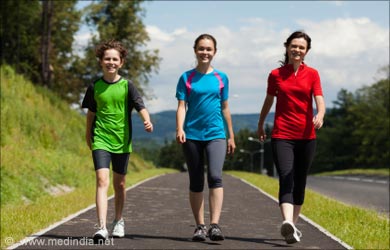
Following is a description of strengthening exercises:
Exercises for the Back and Neck
Lie down flat and raise the knees so the feet touch the ground. Keep the hands on the stomach and tighten the muscles, as the back is pressed against the ground. This should be done for 5 seconds, and can be repeated 10 times.
Lie down as in the previous exercise and lift the back and bottom up, keeping the feet touching the ground and remain for 5 seconds. Repeat 10 times.
Exercises for Wrist and Fingers
Rest both the forearms on the table and clasp the hands at the edge of the table. Move the wrist up and down 5 times.
Rest the elbow on the table and lift the hand up. Bend the fingers till the fingertips touch the base of the fingers. This can be repeated 10 times.
Rest the forearm on the table with the palm outstretched beyond the edge of the table. The elbow should be near the side of the body. Turn the palm, face upwards and downwards alternately, for 10 times.
Rest the forearm on the table with the palm hanging down at the edge of the table. Lift the palm up and clench the fist. Release and drop the palm down. Repeat 10 times.
Rest the elbow and lift up hand. Starting with the little finger, alternately bring tip of each finger to touch the tip of the thumb. The exercise can be repeated 5 times for each hand.
Placing the palm on the table, lift each finger individually off the table. This can be repeated 5 times.
Exercise for the Toes and Feet
Lie down straight and stretch the feet out and in, repeating 10 times. Toes can be wiggled 10 times, following which the feet can be circled 10 times in each direction.
Press the toes down and arch the foot.
Sitting in a straight-back chair, tilt the head to one side and hold for 5 seconds. Repeat the action for the other side. Then, turn the head to one side and hold for 5 seconds, repeating for the other side. Finally, bend the head down towards the chin, keeping the neck and back straight and repeat 5 times.
Exercise for the Knees and Hips
Lie flat and bend knees till feet touch the ground. Now raise one leg and bring the knee to the stomach and hold. Straighten the leg and return to original position. Repeat with the other leg. This exercise can be repeated 5 times.
Lie on the stomach and keep legs stretched for 5 mins. Slowly lift one leg upwards till it reaches its limit and return to original position, before repeating with the other leg. This can be repeated 5 times.
Sit on a firm bed with outstretched legs and press down the knees for 5 seconds. Relax soon after. This exercise should be repeated 5 times.
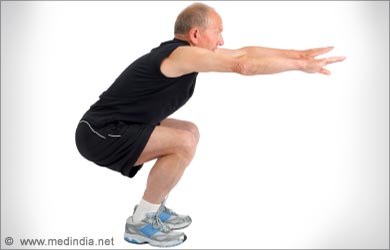
Exercise for the Jaw
Open the mouth wide and stretch the jaw for 5 seconds. Close the mouth soon after. This can be repeated 5 times.
Physiotherapy Exercises for Arthritis
Exercise Therapy
Based on the age of the patient, the joints affected by arthritis, the stage of arthritis, and the regularity of exercise regimen followed, exercises can be prescribed.
Patients with RA are encouraged to exercise to maintain flexibility in muscles and joints. Exercise does not cure the disease, but improves physical endurance and quality of life in patients.
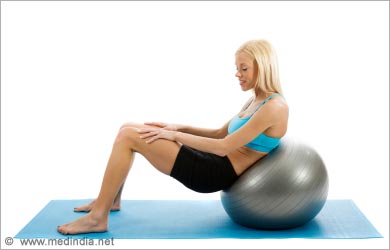
Exercises include, stretching, regular day-to-day activities, ROM exercises, and strengthening. When the joints experience acute pain, it is advised to avoid exercising during that period. Patients with chronic pain are advised to swim, walk, and cycle regularly with adequate rest periods. Such exercise regimens increase the endurance of the patient and improve muscle flexibility. If the exercise creates an increase in stress, pain, fatigue, and swelling, the regimen has to be modified. Patients affected with arthritis should avoid lifting weights or climbing stairs. Each day, patients should move every joint to avoid rigidity developing in joints, muscles, and tendons.
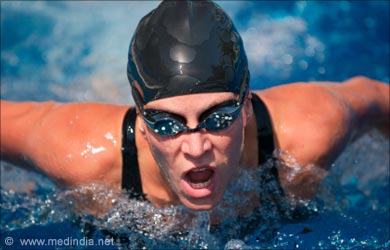
Physiotherapists also educate patients on the techniques they need to adopt to maintain muscle movement with minimal pain. Rest is always essential for those undergoing arthritic pain. One must not strain and perform exercises during pain. It is preferable to sit and perform an activity than stand for prolonged periods. With appropriate exercise and care, patients with arthritis can lead a full, less painful, and active life.











